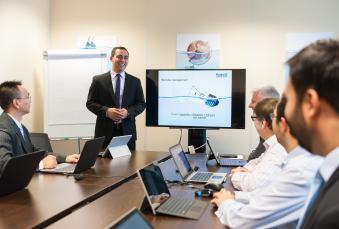Fruit & Vegetable Processing Wastewater Treatment
For fruit and vegetable processing operations, surcharges for sewer disposal can be very high due to the amount of Total Suspended Solids (TSS) and Biochemical Oxygen Demand (BOD) present in the discharging effluent water. Washdown of plant equipment and clean in place (CIP) activities can also dislodge processed stalks, seeds, skins and other waste material along with inorganics, such as sand and dirt, that will be washed away with the cleaning water.
Raw materials received from farming operations are never quite clean enough to prevent abrasive damage to rollers, conveyors, pumps, knives and other processing equipment. Sand and dirt cause equipment to prematurely fail and can force your line to shut down when you are operating at peak capacity.
Flume receiving stations also require a tremendous amount of water, and plants with conventional technologies are often left with no option other than to send flume water to large settling basins that require dredging, excavating, and hauling to regain volume for settling.
A separate conventional screening and dewatering system is also typically required prior to the effluent passing onto a Dissolved Air Flotation (DAF) system, where fine particles, oils and grease are removed.
Our food processing water management solutions can help you to improve the way you capture these materials—protecting your downstream treatment systems, increasing operational efficiency and improving profitability.
Your water could help save you money. Talk to our experts to find out how.
Our experts recommend: incorporate ultrafine screening for better by-product recovery
From skin and peel to cores and pips, by-product materials generated by fruit and vegetable processing have potential value—and discharging these into sewers can mean both lost revenue opportunities and high discharge fees.
Ultrafine screening systems can capture the fine particles (even below 100 micron) that are so frequently missed by conventional technologies—thereby recovering more by-product material than conventional technologies—and they are able to produce a compacted, dewatered product that is cheaper to handle and transport for sale to secondary markets such as animal feed or for use in fertilizer.
Our experts recommend: use hydrodynamic separation to protect downstream equipment from inorganics
Effective hydrodynamic separation systems remove grit, sand and other inorganic solids with extremely high efficiency, protecting downstream systems from clogging and abrasive damage, and preventing the need for large, costly settling tanks.
The correct separator can capture fine inorganic solid particles with high efficiency, with some systems able to remove more than 95% of grit 75 micron (200 mesh) and larger, without the need for chemical or mechanical operation. The availability of small-footprint separator systems also make it easy for owners to eliminate abrasion issues in even the most constrained plant layouts.
Further, in many types of food processing applications once dirt and debris are removed by a separation systems the water can be recycled for immediate re-use upstream to wash or convey additional product or reused in other plant operations.
What challenge would you like to solve?
We can help you improve your profitability, efficiency and compliance
Sectors
Superior equipment for wastewater treatment with a wide range of well-proven and innovative Hydro products





